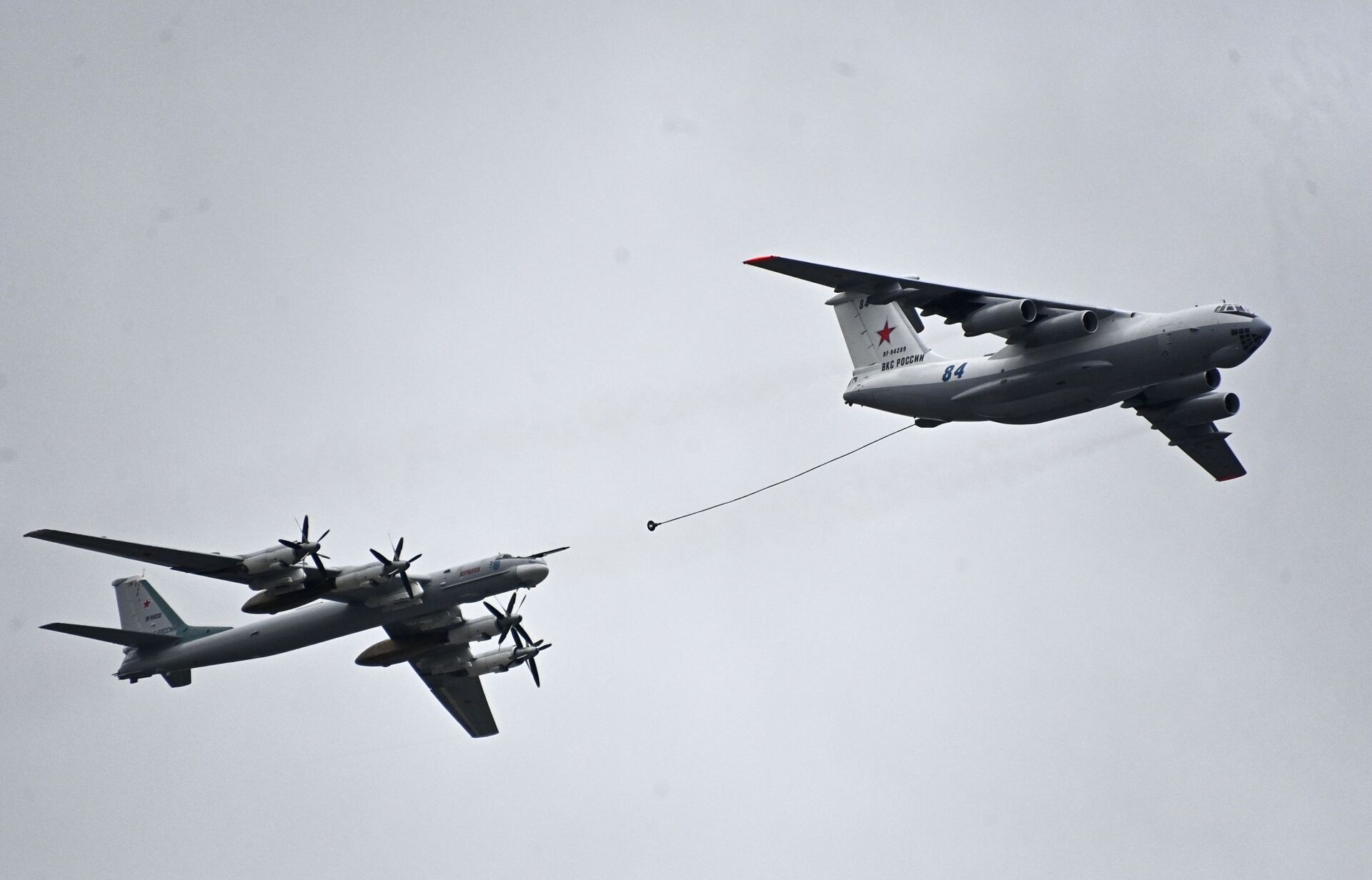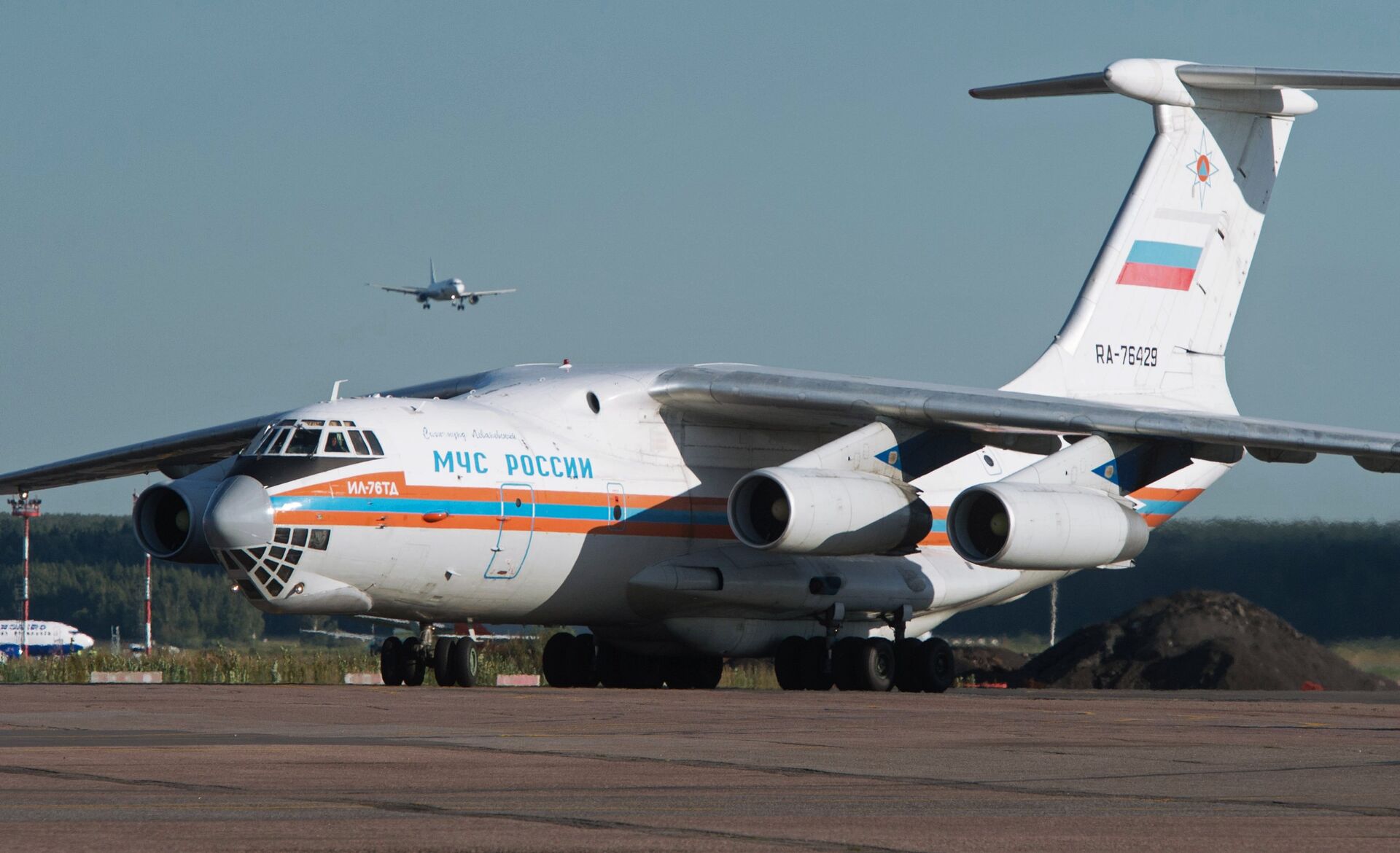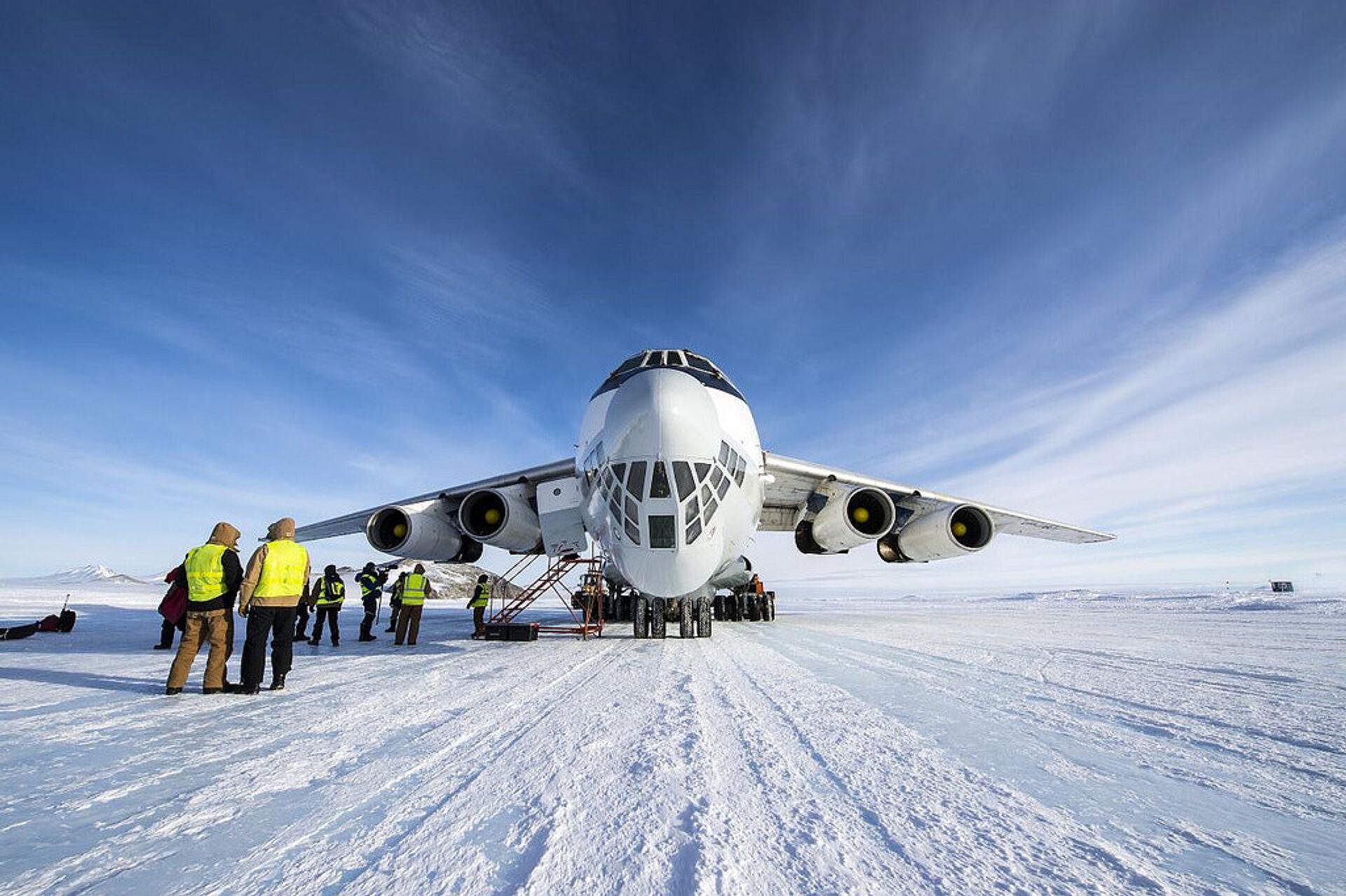Ilyushin Il-76: Russia's Workhorse Strategic Airlifter

© Sputnik / Igor Chuprin
/ Subscribe
Russia's Ilyushin Il-76 heavy airlifter made the news this week after the Russian Defense Ministry reported that the aircraft were used to evacuate people from instability-torn Sudan. What's so special about the plane? What are its characteristics? Why does it have a glass nose? And why do Russian pilots call it the "humpback"? Sputnik explains.
The Russian military sent four Il-76 transport aircraft to Sudan this week to evacuate over 200 people, including employees of the Russian embassy, servicemen and their families, Russian nationals and the citizens of Commonwealth of Independent States countries and several other friendly foreign nations amid fierce fighting between the Sudanese Army and the Rapid Support Forces in Khartoum.
In another story featuring the plane this week, South Africa willfully ignored US sanctions and allowed a Russian Il-76 flying from an airfield outside Moscow to land at an air base near Pretoria following a regional tour which also saw it visit Baghdad, Cairo, Damascus, Algiers, Marrakesh, Abuja, and Luanda.
What is the Ilyushin Il-76 Used For?
Created in the 1970s by the Ilyushin Design Bureau and introduced into service with Aeroflot and the Soviet military, the Il-76 is capable of carrying a wide variety of heavy cargoes long distances – hence the strategic airlifter designation. Depending on modification, the plane can haul loads between 42 and 60 tons distances between 3,600 and 4,200 km, and has a cruising speed of 770-800 km per hour. The aircraft is 46.6 meters long, 14.76 meters tall, has a wingspan of 50.5 meters, and a crew of five.

Training exercise for Russia's Airborne Forces in Ryazan region making use of an Il-76 cargo jet.
© Sputnik / Evgeny Biyatov
/ How Many People and How Much Equipment Can Fit Into an IL-76?
The Il-76 has a 24.5-meter long cargo compartment (4.5 meters of which is its ramp). The compartment is 3.46 meters wide and 3.4 meters high, and has additional space underneath the floor of the main cargo compartment for additional storage. The plane has an overall freight capacity of 230 cubic meters.
That means the quad jet-powered aircraft can transport up 140 troops or 125 airborne force personnel in full parachute gear, or a variety of vehicles, including armored personnel carriers and light tanks, or a wide variety of other mobile or immobile equipment.

A demonstration of the mid-air refueling of a Tupolev Tu-95 strategic rocket carrier by an Ilyushin Il-78 tanker aircraft. The Il-78 is a modification of the Il-76.
© Sputnik / Yevgeniy Odinokov
/ How Much Does an Il-76 Cost?
The Il-76’s manufacturers (which currently include the Aviastar-SP company in the Russian city of Ulyanovsk and the Tashkent Aviation Production Association in Uzbekistan) do not publicize the cost of the aircraft.
However, according to estimates by Russian business media, the modernized Il-76MD-90A variant of the plane goes for about 5 billion rubles apiece (about $65 million US).
How Much Does the Il-76 Cost to Operate Per Hour?
Since the aircraft has been delivered to over two dozen countries around the world, from Europe and Asia to Africa, and even a few to the United States, information about operating costs is easy to come by. According to one company, the plane can be chartered for between $4,800 and $6,700 per flight hour – a real bargain, given that the US equivalent of the aircraft, the Boeing C-17 Globemaster III, is not even available for civilian use, while renting a Boeing 767 cargo runner can run you between $17,000 and $25,000 per flight hour.
How Many Il-76s are There Out There, and How Many Does Russia Have?
The Il-76 is one of the most successful modern cargo transport aircraft designs in the world, with over 960 planes built between 1971 and the present. Major operators include the Russian Aerospace Forces (which has 120+), the Russian Emergencies Ministry (EMERCOM), which operates several Il-76s, including firefighting variant Il-76 TDs, Russia’s National Guard (about 9 planes), the Indian Air Force (over 30), China’s People’s Liberation Army Air Force (17 or more Il-76s of various modifications), the Iranian Air Force (about a dozen) Iranian civilian operators (about a dozen planes), the Ukrainian Air Force, which had 5 Il-76MDs in 2021, and up to 45 Il-76s operated by civilian carriers, Azerbaijan (where about 11 are flown by cargo carriers), Belarus (6 operated by civilian carriers), Turkmenistan Airlines (8 Il-76TDs), and Uzbekistan Airways (about 14 planes).
Why Does the Il-76 Have a Glass Nose?
One of the biggest distinguishing features of the Il-76 is its distinct glass nose cockpit, which, in the right light, gives off the appearance of a plane smiling broadly back at whoever may be observing it. This design feature gives the navigator – who is seated in a separate cabin below the flight deck, an unparalleled view of the environment under the plane – something particularly useful during landings. For the Il-76, made to be rugged enough to take off and land on unpaved, dirt or snow-covered runways, good sightlines can be crucial.
Why is the Il-76 Sometimes Called a 'Humpback'?
Like many Russian aircraft, the Il-76 has its official name, then there's the name given to it by operators. For the Il-76, that name is the 'humpback' or 'hunchback', owing to the distinct placement of its wings – which are situated above the fuselage.
NATO’s codename for the Il-76 is the ‘Candid’, in accordance with a FBCHM classification system under which cargo transport aircraft all start with the letter "C."

Il-76, this one operated by the Russian Emergencies Ministry
© Sputnik / Iliya Pitalev
/ Is the Il-76 the Biggest-Ever Russian Strategic Airlifter?
The Il-76 and its modifications aren’t the only line of modern heavy strategic airlifters designed by Soviet and Russian aircraft makers, with others including the Antonov line of planes – most notably the An-124 Ruslan – which are larger than the Il-76, but less successful in terms of the number built due to their introduction at the twilight of the Soviet period (55 An-124s were produced in total).
The Russian Aerospace Forces, and several commercial operators in Russia, Ukraine and the United Arab Emirates, continue to operate these planes. But the undisputed pinnacle of Soviet heavy strategic airlifter design is the An-225 Mriya (Ukrainian for "Dream") – a giant, six-engined strategic airlifter featuring a fuselage and wing structure similar to the An-124 – but significantly enlarged to a total length of 84 meters, a height of 18.1 meters, a wingspan of 88.4 meters, and a cargo capacity of up to 250 tons (and a cargo hold of 1,300 cubic meters). Unfortunately, Antonov was liquidated by the Ukrainian government in 2017, and the sole operational Mriya built during the Soviet period was destroyed in fighting at an airport outside Kiev in February 2022.
So while the Il-76 may not be the biggest Soviet/Russian strategic airlifter ever conceived, it is definitely the most successful, with nearly five decades of operational experience with dozens of militaries and private operators, and 960+ built airframes, speaking for themselves.



